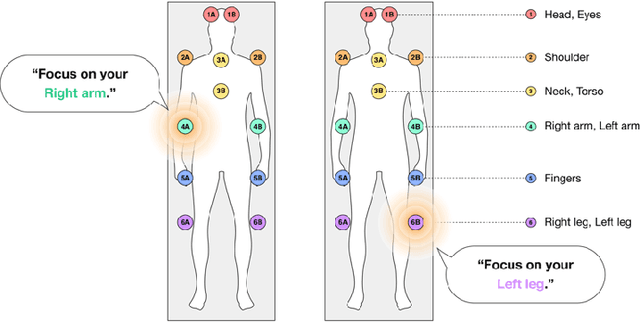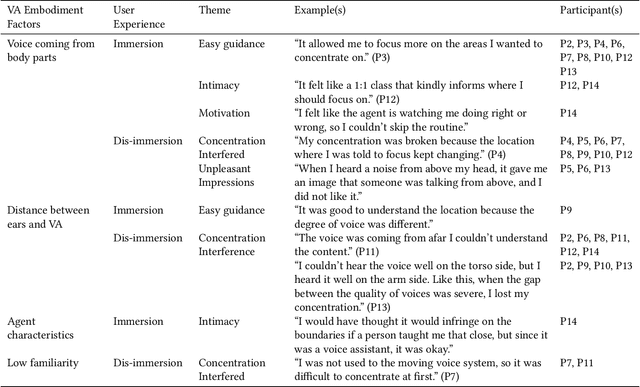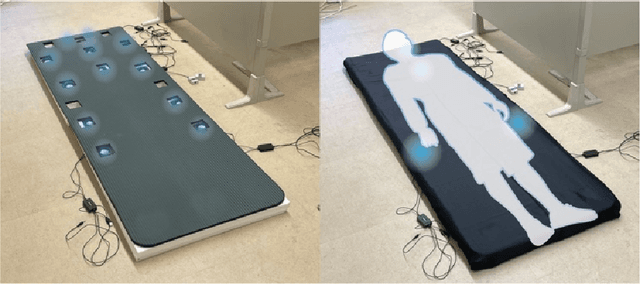Tatsuya Itagaki
Dis/Immersion in Mindfulness Meditation with a Wandering Voice Assistant
Apr 22, 2023


Abstract:Mindfulness meditation is a validated means of helping people manage stress. Voice-based virtual assistants (VAs) in smart speakers, smartphones, and smart environments can assist people in carrying out mindfulness meditation through guided experiences. However, the common fixed location embodiment of VAs makes it difficult to provide intuitive support. In this work, we explored the novel embodiment of a "wandering voice" that is co-located with the user and "moves" with the task. We developed a multi-speaker VA embedded in a yoga mat that changes location along the body according to the meditation experience. We conducted a qualitative user study in two sessions, comparing a typical fixed smart speaker to the wandering VA embodiment. Thick descriptions from interviews with twelve people revealed sometimes simultaneous experiences of immersion and dis-immersion. We offer design implications for "wandering voices" and a new paradigm for VA embodiment that may extend to guidance tasks in other contexts.
* 6 pages
Can Voice Assistants Sound Cute? Towards a Model of Kawaii Vocalics
Apr 22, 2023Abstract:The Japanese notion of "kawaii" or expressions of cuteness, vulnerability, and/or charm is a global cultural export. Work has explored kawaii-ness as a design feature and factor of user experience in the visual appearance, nonverbal behaviour, and sound of robots and virtual characters. In this initial work, we consider whether voices can be kawaii by exploring the vocal qualities of voice assistant speech, i.e., kawaii vocalics. Drawing from an age-inclusive model of kawaii, we ran a user perceptions study on the kawaii-ness of younger- and older-sounding Japanese computer voices. We found that kawaii-ness intersected with perceptions of gender and age, i.e., gender ambiguous and girlish, as well as VA features, i.e., fluency and artificiality. We propose an initial model of kawaii vocalics to be validated through the identification and study of vocal qualities, cognitive appraisals, behavioural responses, and affective reports.
* 7 pages
 Add to Chrome
Add to Chrome Add to Firefox
Add to Firefox Add to Edge
Add to Edge